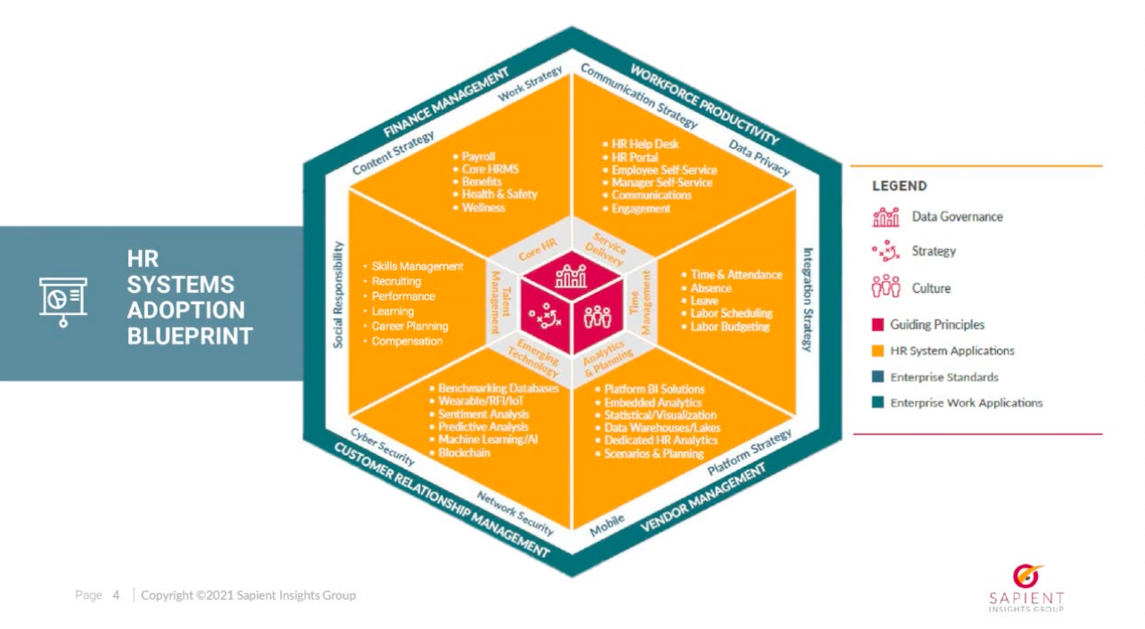Stacey Harris shows us how to Level Up: People, Performance & Processes

Stacey Harris wears many hats and she wears all of them exceedingly well. She is the Chief Research Officer and Managing Partner at Sapient Insights Group. She is also an analyst, an author and a speaker. And if all that wasn’t enough, Harris also hosts her own podcast.
At People Matters TechHR Singapore 2022, we were honoured to have Harris as our keynote speaker as she spoke on “Level Up People, Performance & Processes With HR Tech”. The author of Introduction to HR Technology: How To Understand Technology to Improve Performance and Process brought her immense experience to the proverbial table and helped the audience get into the basics of HR technology and what it means to keep listening and learning.
What is HR Technology?
"I went around the globe trying to get a sense of this: Is it people technology? Is it everything that has to do with work? Is it everything that has to do with how you interface with your employees?” Harris said. “And the answer is it's a little bit of everything. It really is the technology that your organisation adopts to help you interact and engage your employees,” she added.
The Blueprint

Harris also introduced the HR Systems Adoption Blueprint, which attempts to visually show how one should buy or develop HR tech within the organisation, with Data Governance, Strategy and Culture forming the very core.
“If you're new to HR, or if you're new to technology, and HR together, oftentimes, it's really easy to get overwhelmed by how many different types of applications are in the market,” she said during the data-packed session.
“But for most successful organisations we see that they don't start with the process/functional conversation. They start by thinking about what is the culture inside the organisation? What's the strategy for our business that we're trying to achieve? What are the goals we're going to tie this HR system to? And then ultimately, what's the data that we need out of the system and we need to get into the system,” Harris said, talking about the initial points of consideration when adopting an HR system.
“If you start with just functionality, you're much more likely to basically start with, well, I've just got to get the process fixed. And what we often see is that organisations buy the wrong technology because it may functionally meet their needs, but it doesn't address their needs when it comes to a culture or strategy, or more importantly, data that they need to get out of the system,” she added, reiterating the importance of adopting the right HR technology.
Applications of HR technology
“Starting with your strategy, governance, and data are all critical conversations. But eventually, you have to get to what are the actual applications that we need to buy or build. We have identified in our research six big categories that HR technology falls into today,” she said, adding that these are: Core HR, Service Delivery, Time Management, Talent Management, Analytics and Planning and Emerging Technologies.
Highlighting just how dynamic and fast-paced the HR industry is, Harris also talked about how it is extremely likely that an element that currently falls in one category could perhaps morph or change into another category. “Organisations that see the highest outcomes and impact have an HR system strategy that they're evaluating at least every 12 to 18 months,” she said, recommending that you assess your HR technology, environment and needs on a regular basis.
“As you can see, none of these six systems stand alone – they all work together. They're all categories that feed each other and that is why data governance is in the centre along with strategy and culture. So these categories will have to feel a little bit like each other. You may not use the same platform, but one will really need to provide some integration across the system,” she said.
Enterprise standard
Harris then explained the last layer of the blueprint – the enterprise standard. “These enterprise conversations allow HR applications to be the most valuable entities inside your systems if they interact with your business systems, if they can speak the same language as your content tools,” she said. These conversations are about work strategy, content strategy, communication strategy, data privacy strategy, integration strategy, social responsibility, cybersecurity, network security, mobile strategy and platform strategy.
“Something that we have been seeing recently in the market is the integration with Microsoft Office and Google products. This is a big part of really getting an ecosystem that works hand-in-hand with what's going on inside our businesses. You're going to find that your HR technology conversation is much more strategic than just “What process am I trying to automate? And how quickly can I get it rolled out?” Harris said.
Think differently to be a true business partner
“It's great to know about HR technology strategy, it's important to understand the ecosystem that you're working in, it's important to know the different categories of HR technology. But ultimately, your job is to support whatever HR needs to do to achieve business outcomes for the organization,” Harris explained.
“Something we find after analyzing survey data year after year is that finance and supply chain organizations are seen as much more strategic business partners to their enterprises when compared to the human resource function,” she said.
Over the past 5 years, Harris’ data has shown 46% of organizations see HR as a business partner and this percentage has not increased. On the other hand, supply chains' role as a business, strategic business partner and finance’s role as a strategic partner has shown growth every year.
So how can HR beat this obstacle?
“We need to start thinking about HR not just as a compliance HR function. Ultimately, organisations that get the best outcomes from their HR technology investment, from their HR transformation efforts and from their HR process investments are those organisations who really get to a point where they are outcome-focused. And they understand the business at an integral level. These organisations are talking about business vision and goals, about the culture and ethics the organisation is trying to reach. They understand how the company makes money. If you don't understand how the company makes money, it's really hard to understand how the technology is going to meet those needs. And ultimately, they're focusing on leadership behaviors, and available workforce across the organisation. This kind of a model, when put in place, really achieves better outcomes,” she said.
Harris wrapped up her keynote with five golden nuggets: Things that work when it comes to HR technology implementation.
1) One, having a regular updated HR system strategy that's reviewed every 12 to 18 months.
2) Having a regularly updated integration strategy, reviewed every few 12-18 months,
3) Master approach to data governance
4) Master approach to preferred integration standard
5) Implement a culture of change management
















